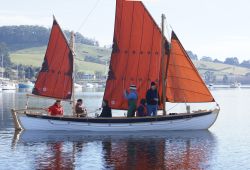 Modern navigation relies on information from satellites - GPS. Thanks to modern technology, voyages can be planned in advance with the aid of electronic charting software. This allows sailors to lay out a course, determine cruising times and work out fuel levels. But there are other ways to navigate your boat…
Modern navigation relies on information from satellites - GPS. Thanks to modern technology, voyages can be planned in advance with the aid of electronic charting software. This allows sailors to lay out a course, determine cruising times and work out fuel levels. But there are other ways to navigate your boat…
Maritime charts
Road maps of the waterways! Only, without road signs and landmarks, maritime charts rely on features not visible to the naked eye:
- Water depth
- Location and description of navigational markers
- Longitude and latitude lines
- Shapes of land masses
A maritime chart will shows all hazards, landmarks, markers and safe passages. If you’re embarking on a journey out to sea, however short, have a maritime chart to hand, but ensure you are able to use it!
Along the edges of the chart are the latitude and longitude lines - horizontal and vertical. The place where these lines meet offer a coordinate for any point in the world. So, if you know your location coordinate, then you’ll never be lost.
Maritime charts are printed in colour to convey important information. For instance, a light blue colour indicates the water is between 1 and 3 fathoms in depth and offers safe passage for most boats.
Did you know?
The word navigate comes from the word "Navi", which in Sanskrit means 'boat' and "Gathi" means 'direction'.
Compass
Modern technology may be sophisticated but they are they always reliable? It’s always a good idea to have a back up system. The compass is merely a small magnet suspended on a pivot point, but a compass can always be relied upon to get a boat back to land.
Ultimately electronic navigation is a luxury for those puttering around lakes, rivers and coastlines but a necessity for anyone boating away from land. It is to date the easiest and most reliable way of keeping track of ones location.
Dead reckoning
Dead reckoning, or DR, is the process of estimating your present position by projecting course and speed from your past position. It’s also used to predict future position by projecting course and speed from a known present position. The DR position is only an approximate position because it does not allow for leeway, current, helmsman error, compass error, or any other external influences.
Navigation Courses
The Royal Yachting Association (RYA) has offers a two day basic introduction to navigation course. Taught at boating centres across the UK, this course is ideal for those new to boating who want to pick up some essential navigation skills. More experienced navigators can take part in the more advanced RYA skippering courses, including subjects like meteorology, collision avoidance and passage planning.
Other ways to navigate your boat
Pilotage involves navigating in restricted waters with the determination of position being relative to geographic and hydrographic features.
Celestial navigation means reducing celestial measurements to lines of position using tables, spherical trigonometry, and almanacs.
Radio navigation uses radio waves to determine position by either radio direction finding systems or hyperbolic systems.
Radar navigation determines the distance from objects whose position is known.